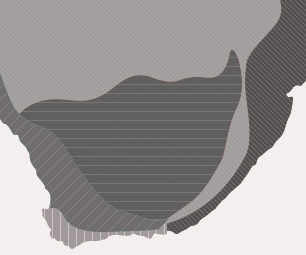Aizoaceae
Oscularia caulescens (Mill.) Schwantes
Family:
Common names: dassievygie, sandsteenvygie (Afr.)
Plant Attributes:
Plant Type:
SA Distribution:
Soil type:
Flowering season:
PH:
Flower colour:
Aspect:
Gardening skill:
Special Features:
Horticultural zones

Malephora N.E.Br.
Family:
Common names: mesemb ( Eng. ); vygie (Afr.)
Plant Attributes:
Plant Type:
SA Distribution:
Soil type:
Flowering season:
PH:
Flower colour:
Aspect:
Gardening skill:
Special Features:
Horticultural zones

Lithops olivacea L.Bolus
Family:
Common names: stone plant (Eng.); beeskloutjie (Afr.)
Plant Attributes:
Plant Type:
SA Distribution:
Soil type:
Flowering season:
PH:
Flower colour:
Aspect:
Gardening skill:
Special Features:
Horticultural zones

Lithops N.E.Br.
Family:
Common names: living stones, stone plants (Eng.); beeskloutjies, perdeklou (Afr.)
Plant Attributes:
Plant Type:
SA Distribution:
Soil type:
Flowering season:
PH:
Flower colour:
Aspect:
Gardening skill:
Special Features:
Horticultural zones

Lithops optica (Marloth) N.E. Br.
Family:
Common names: Lüderitz Living Stone, Lüderitz Stone Plant, Lüderitz Beeskloutjie
Plant Attributes:
Plant Type:
SA Distribution:
Soil type:
Flowering season:
PH:
Flower colour:
Aspect:
Gardening skill:
Special Features:
Horticultural zones

Lampranthus tenuifolius (N.E.Br.)
Family:
Common names: None
Plant Attributes:
Plant Type:
SA Distribution:
Soil type:
Flowering season:
PH:
Flower colour:
Aspect:
Gardening skill:
Special Features:
Horticultural zones

Lampranthus roseus (Willd.) Schwantes
Family:
Common names: rose vygie, roosvygie
Plant Attributes:
Plant Type:
SA Distribution:
Soil type:
Flowering season:
PH:
Flower colour:
Aspect:
Gardening skill:
Special Features:
Horticultural zones

Lampranthus hoerleinianus (Dinter) Friedrich
Family:
Common names: purple vygie
Plant Attributes:
Plant Type:
SA Distribution:
Soil type:
Flowering season:
PH:
Flower colour:
Aspect:
Gardening skill:
Special Features:
Horticultural zones

Lampranthus bicolor (L.) N.E.Br.
Family:
Common names: Bicoloured lampranthus (Eng.); bont vygie (Afr.)
Plant Attributes:
Plant Type:
SA Distribution:
Soil type:
Flowering season:
PH:
Flower colour:
Aspect:
Gardening skill:
Special Features:
Horticultural zones

Lampranthus haworthii (Donn) N.E.Br.
Family:
Common names: purple vygie, ice plant, mesemb
Plant Attributes:
Plant Type:
SA Distribution:
Soil type:
Flowering season:
PH:
Flower colour:
Aspect:
Gardening skill:
Special Features:
Horticultural zones






Rate this article
Article well written and informative
Rate this plant
Is this an interesting plant?
Login to add your Comment
Back to topNot registered yet? Click here to register.